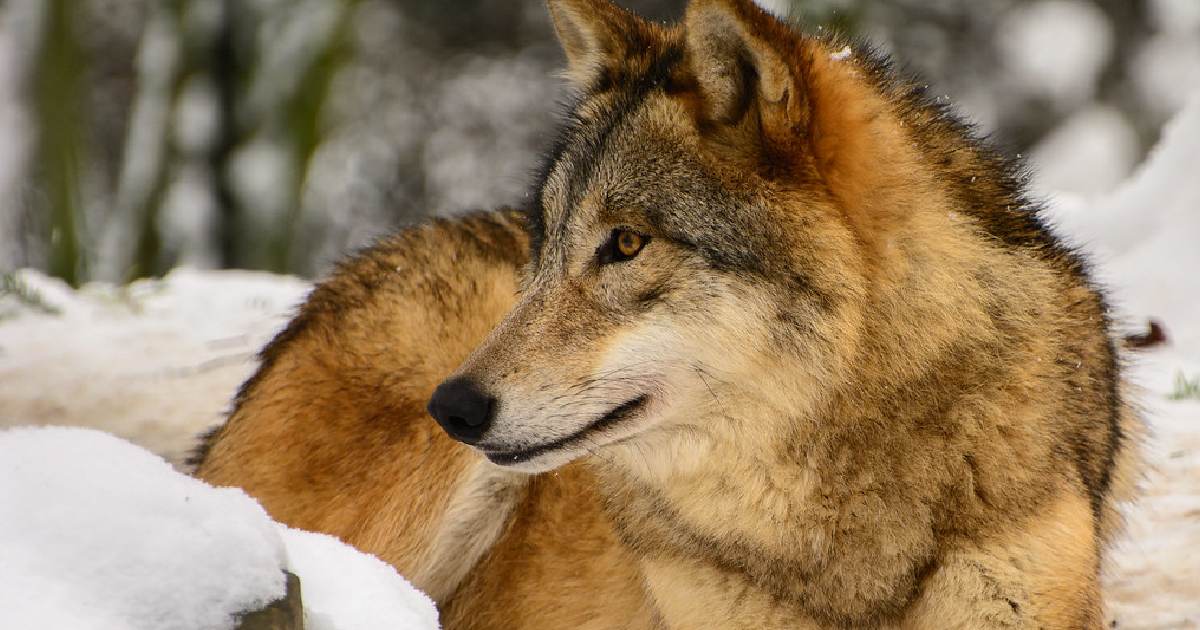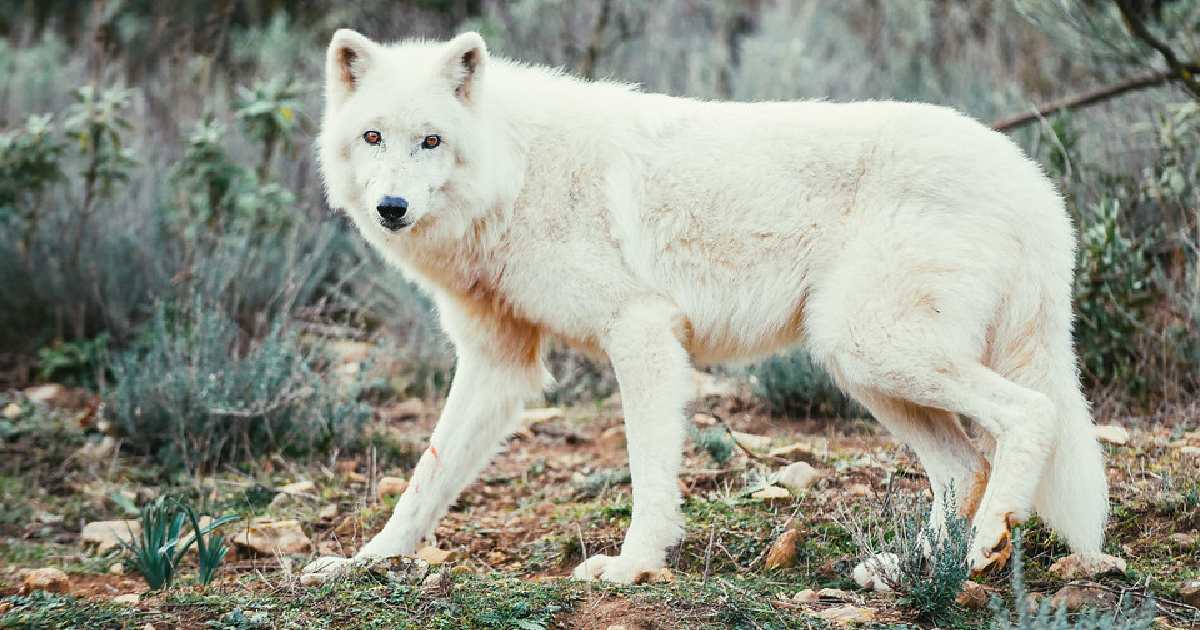Wolves have long fascinated humans with their complex social structures, haunting howls, and sheer resilience. Among the various species of wolves, some stand out for their size and presence in the wild. This article will explore the largest wolves in the world, delving into their habitats, physical characteristics, and unique behaviors.
10. Himalayan Wolf

- Size: Approximately 77 pounds (34.9 kg)
- Location: Himalayan Mountains
- Key Feature: Adapted to high altitudes
The Himalayan wolf (Canis lupus chanco) thrives in one of the most challenging environments on Earth. Weighing around 77 pounds on average, these wolves navigate the dizzying heights of the Himalayas, surviving where the air is thin and life is tough. Their diet primarily consists of local fauna such as yaks, sheep, and goats, demonstrating their adaptability to the high-altitude ecosystem.
These wolves are remarkable for their ability to endure extreme cold and scarce resources. Their thick fur and robust physiology are perfectly suited to the harsh, frigid climate. Despite the tough conditions, the Himalayan wolf continues to thrive, a testament to its evolutionary success in some of the highest regions on the planet.
9. Mongolian Wolf

- Size: 57 to 82 pounds (25.9 to 37.2 kg)
- Location: Mongolia’s steppes and forests
- Key Feature: Key predator in the ecosystem
The Mongolian wolf (Canis lupus chanco) is a crucial part of Mongolia’s vast steppes and dense forests. These wolves, weighing between 57 and 82 pounds, often reach up to 6 feet in length. As guardians of their ecosystem, they play a significant role in controlling rodent populations, thus maintaining ecological balance.
Adapted to Mongolia’s unique and often harsh conditions, the Mongolian wolf has honed its survival skills over millennia. Their presence ensures the health of their natural habitat, demonstrating the importance of top predators in preserving ecological harmony. Their resilience and adaptability make them formidable survivors in an ever-changing environment.
8. Red Wolf

- Size: 50 to 85 pounds (22.7 to 38.9 kg)
- Location: Southeastern United States
- Key Feature: Critically endangered
The red wolf (Canis rufus) is a symbol of beauty and fragility in North America’s wild landscapes. Weighing between 50 and 85 pounds, these wolves stand out with their distinct reddish-brown fur. However, their population has dwindled dramatically, making them critically endangered.
Once roaming vast stretches of the southeastern United States, the red wolf now survives primarily in eastern North Carolina, thanks to conservation efforts led by the U.S. Fish and Wildlife Service. With around 15 to 17 individuals in the wild and about 241 in captive breeding programs, the red wolf’s story highlights the critical need for wildlife conservation.
7. Steppe Wolf

- Size: 77 to 88 pounds (34.9 to 39.9 kg)
- Location: Eurasian steppes
- Key Feature: Ecosystem engineers
The steppe wolf (Canis lupus campestris) roams the vast Eurasian steppes, weighing between 77 and 88 pounds. These wolves, averaging about 5 feet in length, are true nomads of desert and grassland habitats. Their role in controlling populations of small herbivores like rodents and rabbits is crucial for maintaining ecological balance.
Living in such harsh climates and scarce water sources, steppe wolves have evolved to be resilient and adaptable. Their presence is vital for the health of the steppe ecosystem, preventing overgrazing and ensuring the sustainability of their habitat. These wolves exemplify nature’s ability to adapt and thrive in challenging environments.
6. Tundra Wolf

- Size: 88 to 108 pounds (39.9 to 50 kg)
- Location: Siberian tundra
- Key Feature: Thick fur for subzero temperatures
The Alaskan tundra wolf (Canis lupus albus) is a formidable predator in the Siberian tundra. Weighing between 88 and 108 pounds, these wolves are built to survive in one of the harshest environments on Earth. Their thick fur coats, ranging from white to grey, provide essential insulation against the freezing temperatures.
Adapted to their icy realm, tundra wolves are skilled hunters, preying on a variety of animals, including Siberian roe deer and wild boar. Their survival in such a hostile environment showcases their adaptability and resilience. These wolves are a vital part of the tundra ecosystem, ensuring the balance of predator and prey.
5. Arctic Wolf

- Size: 70 to 125 pounds (31.8 to 56.7 kg)
- Location: Arctic regions
- Key Feature: White fur for camouflage
In the frostbitten realms of the Arctic, the Arctic wolf (Canis lupus arctos) stands as a majestic testament to nature’s resilience. Weighing between 70 and 125 pounds and measuring about 5 to 6 feet in length, these wolves thrive in one of the planet’s most extreme environments.
Their stark white fur provides essential insulation and perfect camouflage against the endless snow. The Arctic wolf’s unique relationship with humans, marked by curiosity rather than fear, makes them intriguing subjects for wildlife observers. Their hunting strategies are honed to perfection, tackling Arctic hares, muskoxen, and caribou.
4. Interior Alaskan Wolf

- Size: 71 to 145 pounds (32.2 to 65.8 kg)
- Location: Alaska’s interior
- Key Feature: Robust and versatile
Encounter the Alaskan interior wolf, also known as the Yukon wolf (Canis lupus pambasileus), in the rugged wilderness of Alaska’s interior. Weighing between 71 and 145 pounds and measuring up to 6 feet in length, these wolves exemplify survival in the wild.
The Alaskan interior wolves’ coat provides essential warmth and camouflage in freezing conditions. These wolves demonstrate outstanding hunting skills, preying on both sizable moose and agile caribou. They are crucial to the Alaskan ecosystem, maintaining the balance by controlling large herbivore populations.
3. Northern Rocky Mountain Wolf

- Size: 70 to 150 pounds (31.8 to 68 kg)
- Location: Rocky Mountains
- Key Feature: Apex predator in Yellowstone
Roaming the majestic expanse of the Rocky Mountains, the Northern Rocky Mountain wolf (Canis lupus irremotus) weighs between 70 and 150 pounds. These wolves, measuring up to 6 feet in length, are masters of adaptation and endurance.
In places like Yellowstone National Park, they play a critical role as apex predators, keeping herbivore populations in check. Their sophisticated social structure and cooperative hunting tactics ensure their evolutionary success. Living in well-organized packs, they maintain the balance of plant and animal life in the Rockies.
2. Eurasian Wolf

- Size: Up to 165 pounds (74.8 kg)
- Location: Europe and Asia
- Key Feature: Legendary status
The Eurasian wolf (Canis lupus lupus) is a true icon of the wild, weighing up to 165 pounds in exceptional cases. These wolves, measuring 5 to 6 feet in length, roam diverse terrains from Eastern Europe’s forests to Siberia’s frozen expanses.
Their adaptability allows them to thrive in a wide array of environments. The Eurasian wolf’s impact on human culture is profound, as they have been creatures of myth and folklore throughout history. Ecologically, they control populations of deer, wild boar, and other prey species, maintaining the balance of their habitats.
1. Canadian Timber Wolf

- Size: Up to 175 pounds (79.4 kg)
- Location: North America
- Key Feature: Largest wolf species
The Canadian timber wolf (Canis lupus occidentalis), also known as the Mackenzie Valley wolf or northwestern wolf, is one of the largest wolves in the world. Weighing up to 175 pounds and measuring up to 6 feet in length, these wolves dominate the wilderness of North America.
These wolves are unparalleled in their adaptability, thriving in diverse environments, from dense forests to open tundras. They prey on large ungulates like elk and deer, playing a crucial role in maintaining ecological balance. Known for their complex social structures, Canadian timber wolves live in organized packs, showcasing advanced communication and cooperation skills.
Conclusion
Wolves are some of the most fascinating and adaptable creatures in the wild. From the Himalayas to the Arctic, these magnificent predators play a crucial role in their ecosystems. Understanding and appreciating the diversity and complexity of wolf species helps us recognize the importance of conservation efforts to protect these incredible animals and their habitats. The largest wolves in the world, including those not mentioned, such as dire wolves and gray wolves, are not only remarkable for their size but also for their vital contributions to the balance of nature.
Frequently Asked Questions (FAQs)
Where are the largest wolves in the world?
The largest wolves in the world are primarily found in North America, particularly in the northern regions such as Canada and Alaska. The Canadian timber wolf, also known as the Mackenzie Valley wolf, and the Alaskan interior wolf are among the largest. These wolves thrive in vast, rugged landscapes where they can hunt large prey like moose and caribou.
Does Canada have the biggest wolves?
Yes, Canada is home to some of the biggest wolves in the world. The Canadian timber wolf, also known as the Mackenzie Valley wolf, is one of the largest wolf species, with some individuals weighing up to 175 pounds. These wolves inhabit the dense forests and tundras of Canada, demonstrating incredible adaptability and playing a key role in maintaining ecological balance.
What is the strongest breed of wolf?
The strongest breed of the wolf is often considered to be the Mackenzie Valley wolf or Canadian timber wolf. These wolves are known for their significant size, strength, and powerful build, allowing them to take down large prey such as elk and bison. Their strength, combined with their social pack structure, makes them formidable predators in the wild.
How big are the wolves in Alaska?
Wolves in Alaska, specifically the Alaskan interior wolf or Yukon wolf, are among the largest in the world. They typically weigh between 71 to 145 pounds and can reach lengths of up to 6 feet, including the tail. These wolves have adapted to the harsh Alaskan wilderness, showcasing remarkable strength and resilience in their rugged, frigid habitat.
What was the biggest wolf in history?
The biggest wolf in history is the extinct dire wolf (Canis dirus). These prehistoric predators were larger and more robust than modern gray wolves, weighing up to 200 pounds and measuring over 5 feet in length. Dire wolves roamed North and South America during the Late Pleistocene epoch, preying on large mammals before going extinct around 10,000 years ago.

